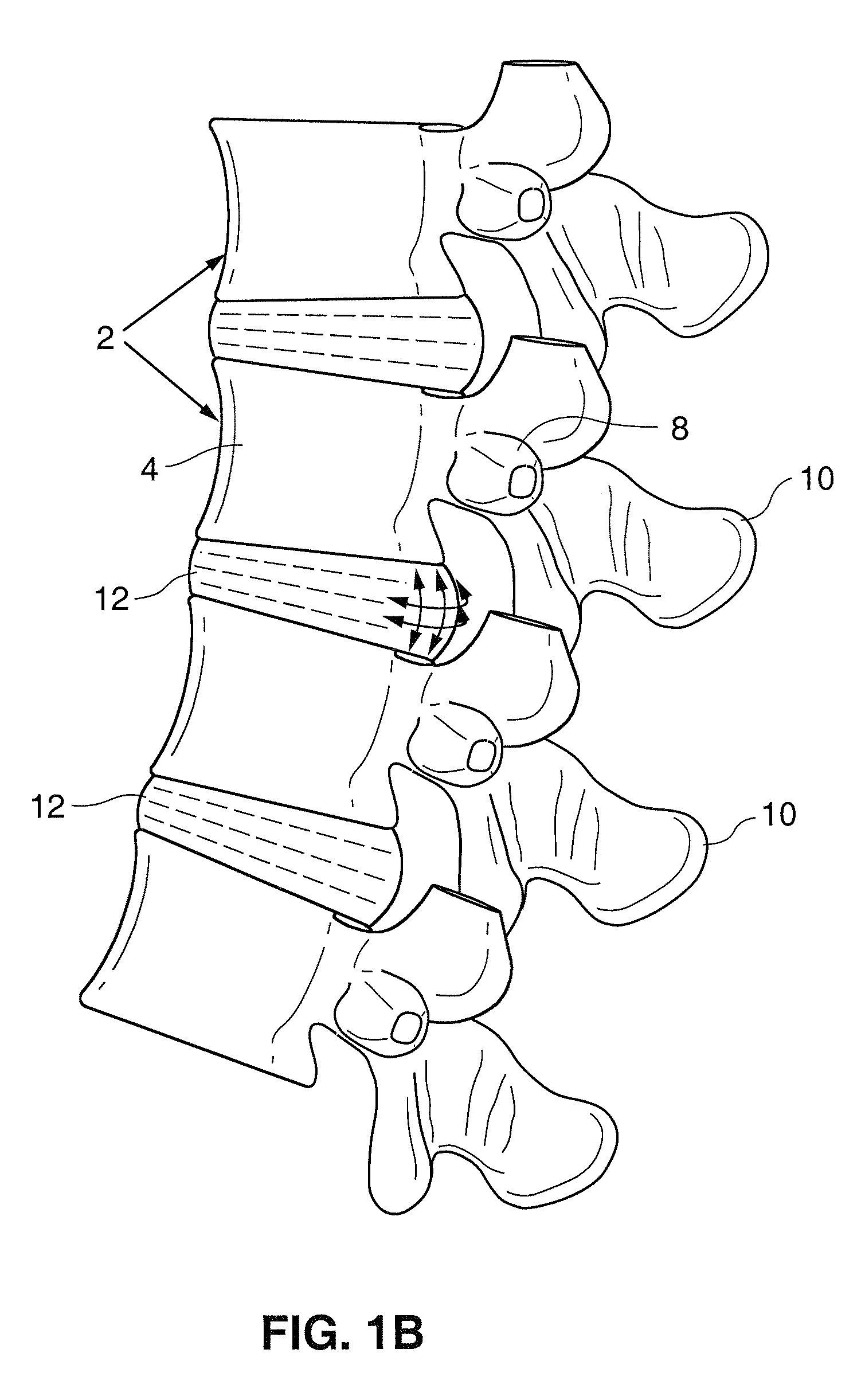Spinal implant and method for restricting spinal flexion
a technology of spinal flexion and spinal implants, applied in the field of spinal implants, can solve the problems of affecting patients' ability to work and otherwise enjoy their lives, discogenic pain can be quite disabling, and current treatment options for patients diagnosed with chronic discogenic pain are quite limited
- Summary
- Abstract
- Description
- Claims
- Application Information
AI Technical Summary
Benefits of technology
Problems solved by technology
Method used
Image
Examples
first embodiment
[0023]Referring to FIG. 2, a spinal implant comprises an elastic or semi-elastic band 20 sized to be positionable around adjacent spinous processes 10. Once implanted, the band 20 limits the amount of spreading between spinous processes 10 upon spinal flexion. Thus, when the patient bends the band 20 is placed in tension, thereby restricting posterior tension that would otherwise be experienced by the dorsal annulus and limiting the amount of flexion that can be achieved. Thus, the intervertebral disc is subjected to limited bending forces and pain is therefore reduced or eliminated. In this capacity, the band functions as an artificial ligament, supplementing the supraspinous and interspinous ligaments, which are normally loaded during flexion.
[0024]As best shown in FIG. 3A, band 20 includes an elongate portion 22 having ends 24a, 24b and a connector 26 for coupling the ends 24a, 24b to form the band into a loop. The connector 26 includes a housing 27 having a keyway opening 28 at ...
third embodiment
[0041]Components of a spinal implant 70 are illustrated in FIG. 7. Implant 70 is similar to the prior embodiments in that, when assembled, it takes the form of a band positionable around the spinous processes. However, it differs from prior embodiments in that it restricts spinal flexion using compression elements that are placed in compression upon expansion of the band during spinal flexion.
[0042]Referring to FIG. 7, implant 70 includes a pair of elastomeric members 72a, 72b, each of which includes a throughbore 74a, 74b and a cable 76a, 76b extending through the throughbore. Cables 76a, 76b are preferably inelastic, although in an alternative embodiment elastic cables may also be used. The elastomeric members may be housed in an enclosure or casing 86 (FIG. 9) formed of a biocompatible metal (e.g. titanium or stainless steel) or polymer, if desired. Casing 86 includes a removable cap 88 which mates with the casing using threaded connections. Openings 89a, 89b are provided in the ...
PUM
 Login to View More
Login to View More Abstract
Description
Claims
Application Information
 Login to View More
Login to View More - R&D
- Intellectual Property
- Life Sciences
- Materials
- Tech Scout
- Unparalleled Data Quality
- Higher Quality Content
- 60% Fewer Hallucinations
Browse by: Latest US Patents, China's latest patents, Technical Efficacy Thesaurus, Application Domain, Technology Topic, Popular Technical Reports.
© 2025 PatSnap. All rights reserved.Legal|Privacy policy|Modern Slavery Act Transparency Statement|Sitemap|About US| Contact US: help@patsnap.com



